Resources
 Part of the Oxford Instruments Group
Part of the Oxford Instruments Group
Expand
Collapse
 Part of the Oxford Instruments Group
Part of the Oxford Instruments Group
C-RED 2 Lite is a 640 x 512 stabilized SWIR camera running at 600 FPS full frame. Recent experiments have demonstrated that radiometric temperature measurements are possible with this camera. A specific plugin in our First Light Vision software enables to calibrate an imaging system and perform non-contact thermography.
All materials at a temperature above 0 K (-273.15°C) radiate energy. By measuring the emitted radiation with prior knowledge of spectral range and emissivity, the temperature of an object can be retrieved. Thermography is the technique used to make such temperature measurements. Applications include welding, metal and glass industry, etc.
Planck’s law describes the spectral distribution of the radiation emitted by a black body, when there is no flow of matter or energy between the body and its environment [1].
The intensity and spectral distribution of the emitted radiation are function of the temperature and the surface emissivity of the hot body. The higher the temperature of a body, the more radiation it emits at every wavelength.
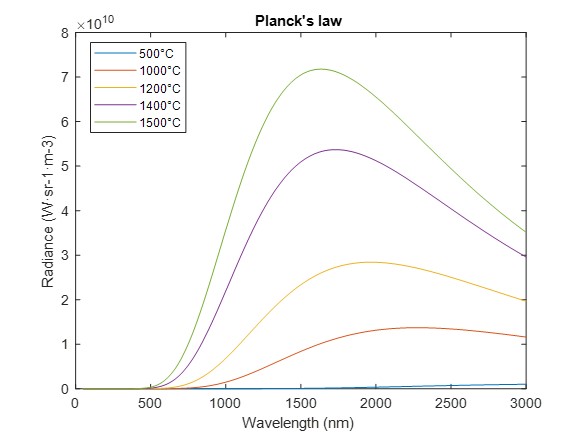
Black body radiance. Planck’s law gives the theoretical radiance as a function of wavelength.
The infrared spectrum can be divided into three bands : SWIR (900-1700 nm), MWIR (3-5 um) and LWIR (7-14 um). For temperature measurements within 300 - 1600 0C there is a real advantage of working in the SWIR range. It optimizes the spectral radiance and diminishes the error induced by emissivity, thus optimizing the measurement precision. As a general rule : the measurement error is higher for higher temperatures at longer wavelengths.
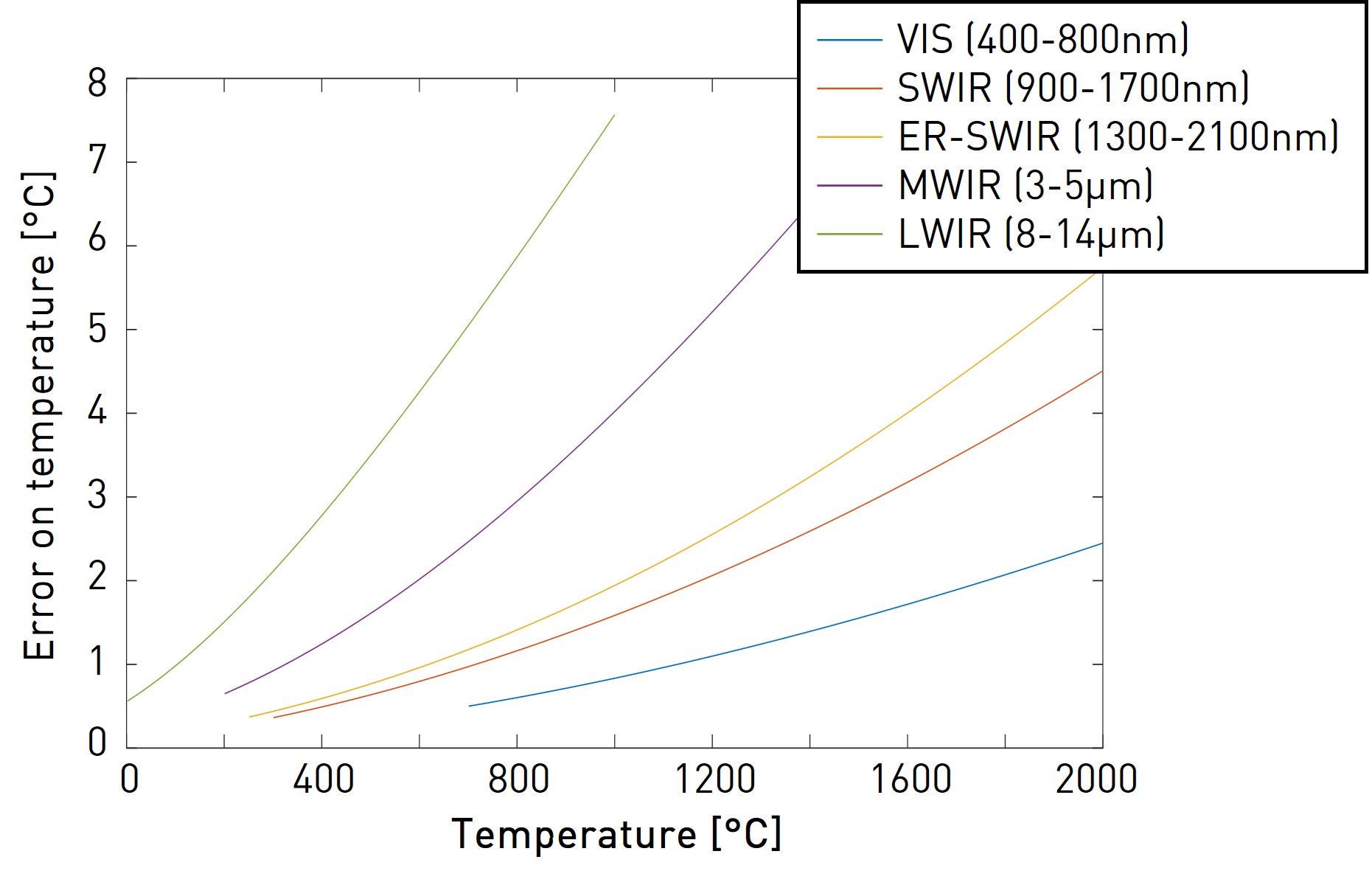
Resulting temperature measurement error at an emissivity error of 1%
SWIR cameras can be used to perform temperature measurements in the range of 300 to 1600°C with a high accuracy
In the C-RED 2 Lite camera, the sensor is stabilized by a thermo-electric cooler (TEC) and integrated in a compact and robust high-speed SWIR camera. Thanks to a new plugin in the First Light Vision software, C-RED 2 Lite can be used for radiometrically calibrated thermography imaging!
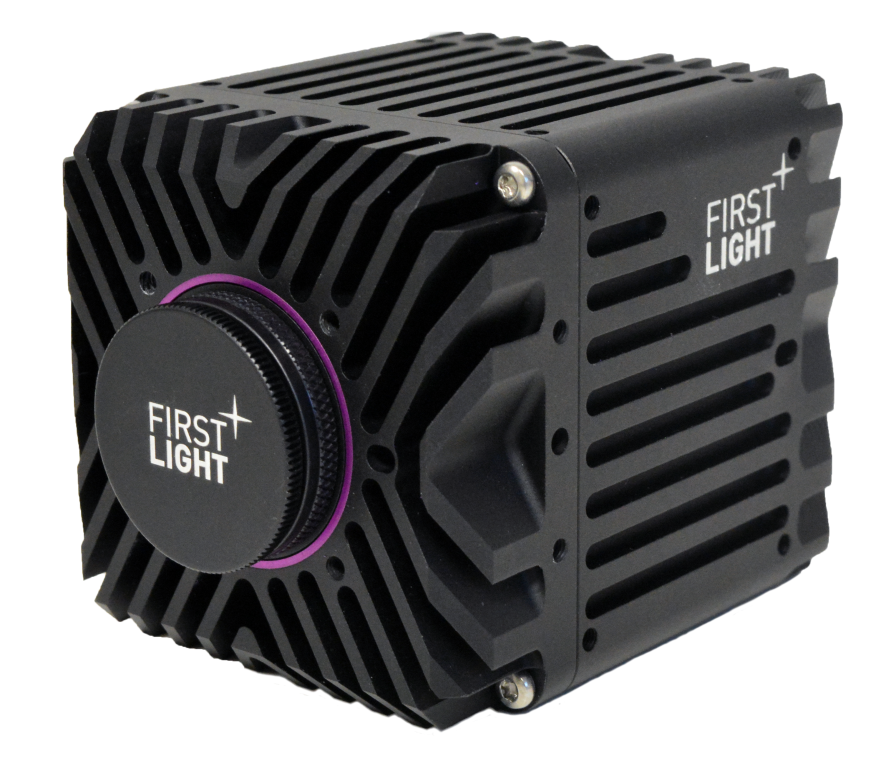
C-RED 2 Lite camera
Thermography module
First Light Vision provides everything you need to set up, control, display and record thermography images.
A camera will detect the radiance emitted by objects. Interestingly, the radiance is a known function of temperature. Hence, the camera output in Arbitrary Digital Units (ADU) – grey levels – can be converted to temperature.
By integrating Planck’s law over the wavelengths 900 to 1700 nm it is possible to obtain the theoretical total SWIR radiance as a function of temperature. It is valid for a black body (idealized object which absorbs and emits all radiation frequencies).
The radiance that can be detected by a thermography device is a fraction of this total radiance and depends on the optics (aperture, transmission) and the detector (quantum efficiency).
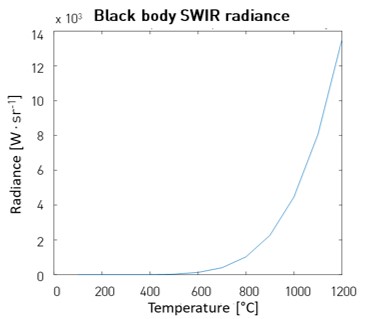
Black body SWIR radiance. The integration of Planck’s law in the SWIR range gives the theoretical detectable radiance.
A thermography device needs to be calibrated to adjust the relationship between temperature and detected radiance. In this experiment a RN1350 N1 black body from HGH Infrared is used. The temperature of the black body can be tuned within a 50 to 1350°C range. The imaging system is a First Light Imaging camera with a 35 mm SWIR objective.
The environment temperature is stable and measurements are made in a black box.
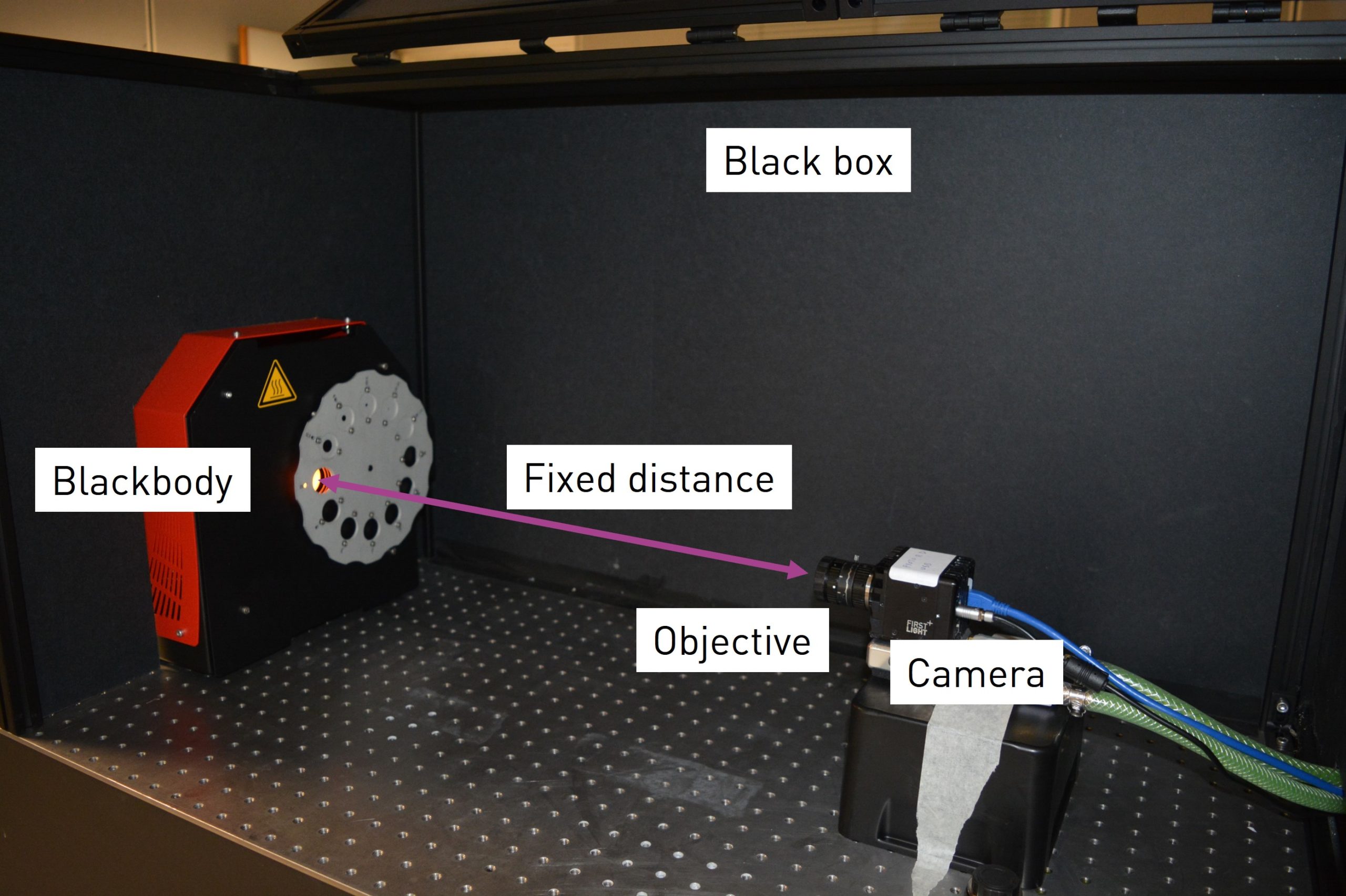
Thermography calibration bench.
A homogeneous region of interest in the center of the black body is used to evaluate the detected radiance, in units of ADU. When the detector saturates, the aperture of the objective lens is shut by one f-stop.
The acquisition parameters are the following :
For each temperature point (every 10°C), the mean detected level is plotted against temperature.
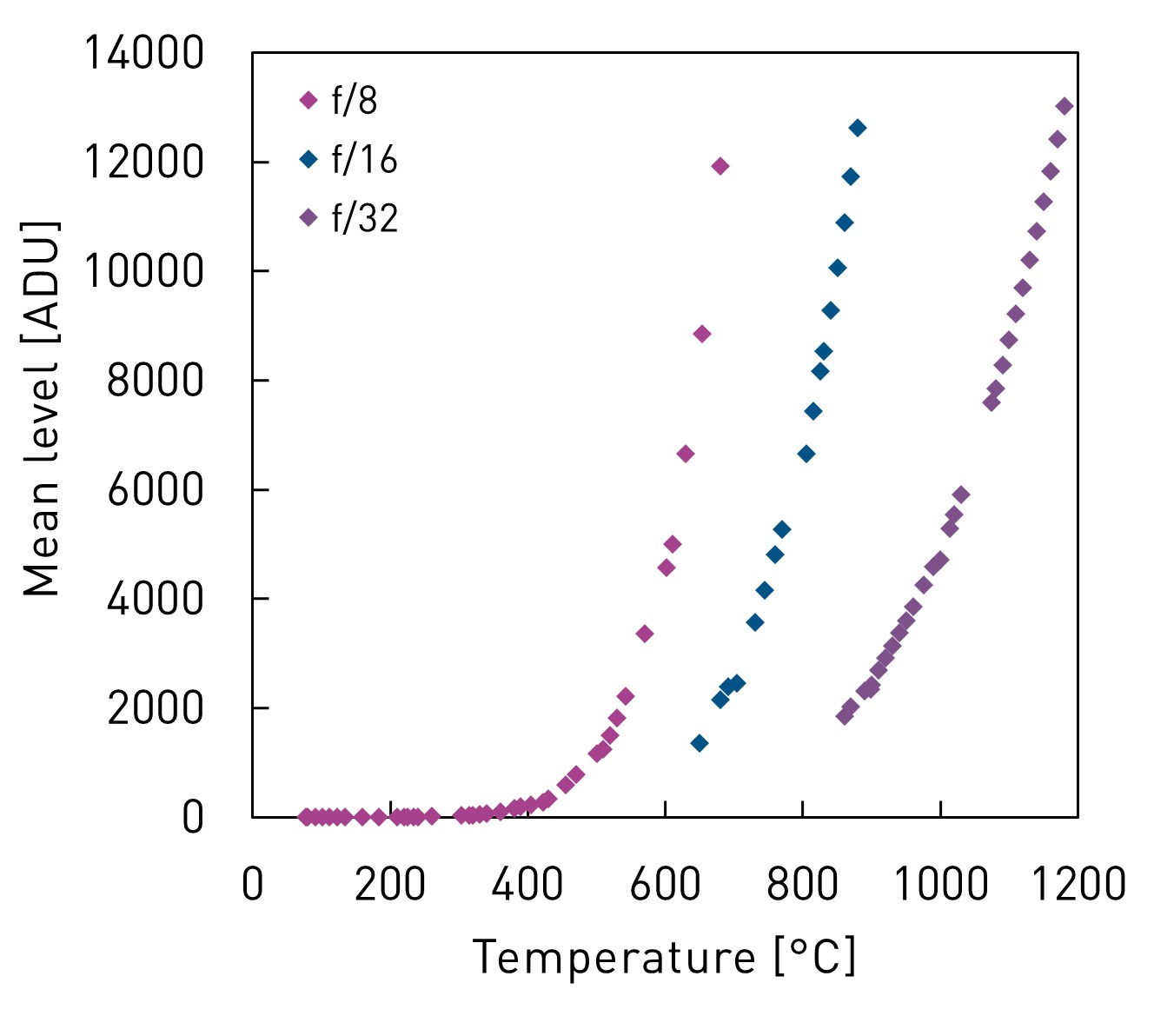
Experimental results. The three sets of data correspond to different apertures of the objective lens.
The experimental data sets can be fitted on the theoretical SWIR radiance as a function of the temperature curve described earlier.
The multiplication coefficient used is the ratio of the radiance emitted by the blackbody to the radiance detected by the sensor (expressed in W⋅sr-1 per ADU). It depends on the entire thermography device : the objective lens (aperture, transmittance), the camera (quantum efficiency, conversion gain, etc.), the distance from the object to the device and the object’s emissivity. Hence, each of the data set (f/8, f/16 and f/32) will have a specific conversion factor to convert ADUs to SWIR radiance.
The calibration of the thermography device consists in finding this conversion factor.
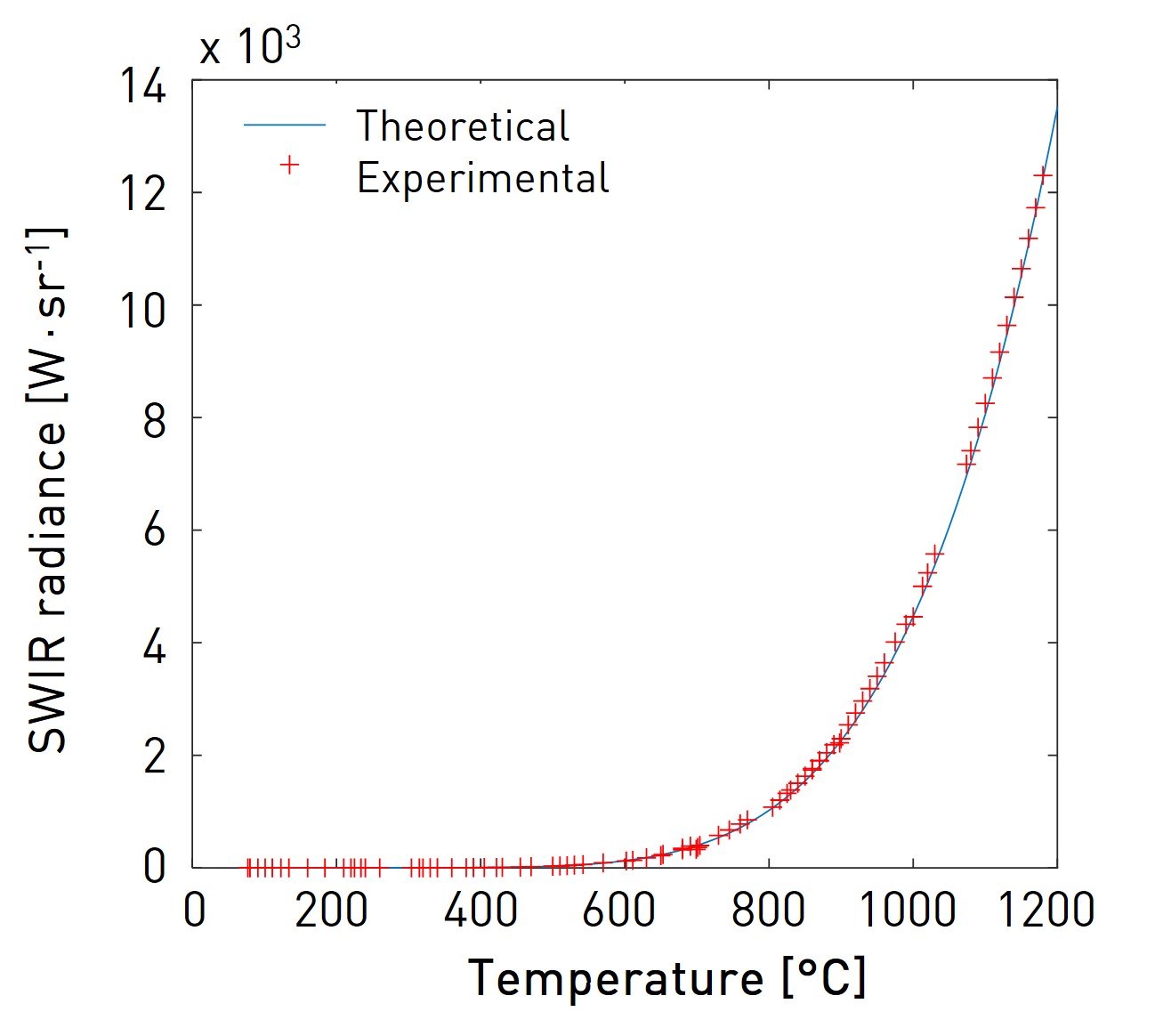
Fit of the experimental results (red crosses) to the theoretical model (blue line).
There are several aspects to consider :
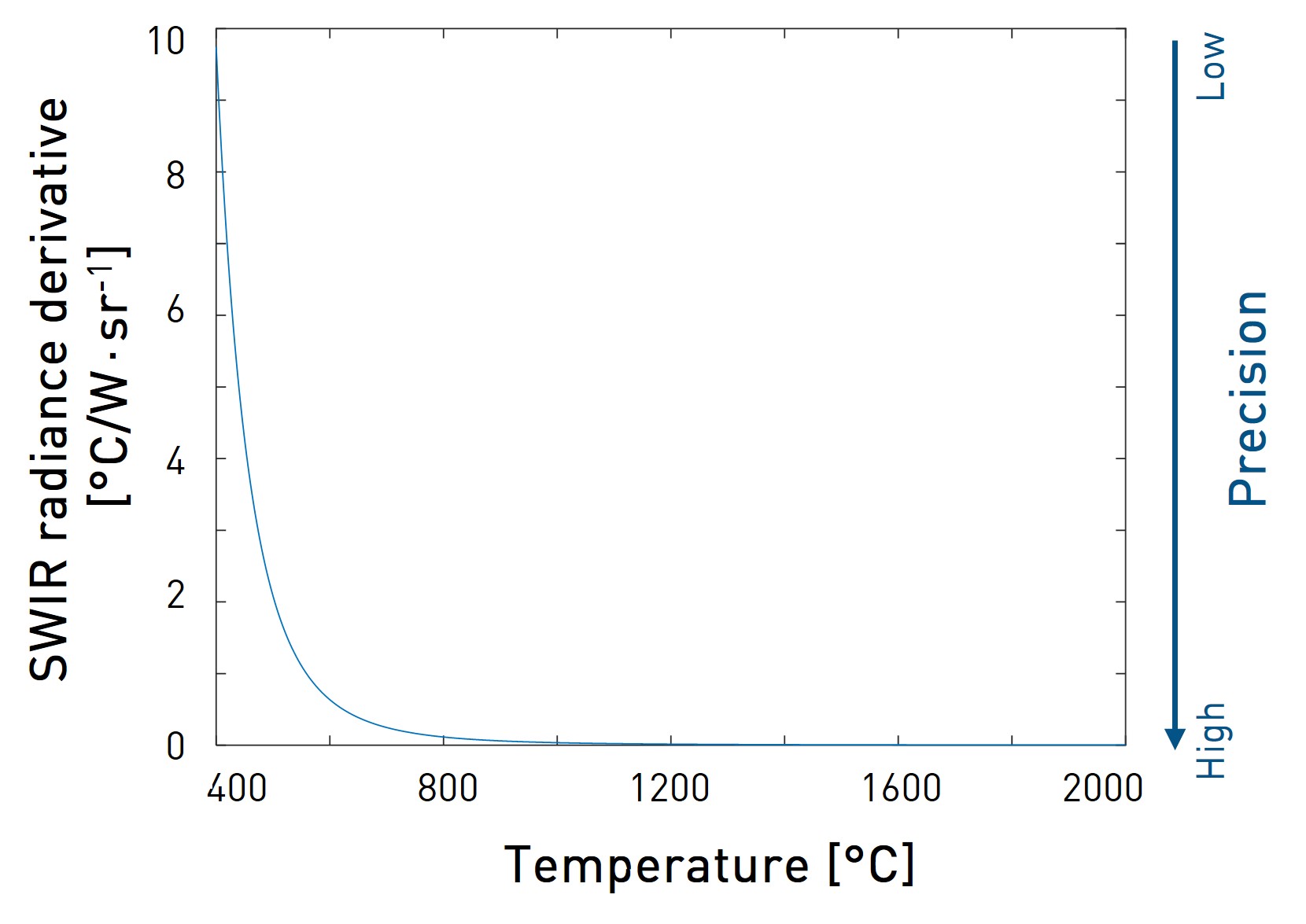
Theoretical precision of SWIR black body radiance measurement.
To optimize the accuracy of the temperature measurement,
Some sources of inaccuracy may be difficult to mitigate but should not be overlooked:
C-RED 3 is a plug-and-play camera.
A camera can be calibrated to correlate the detected signal to an absolute object temperature. This enables subsequent thermography quantitative measurements.
With a calibrated thermography system, it is possible to perform radiometric measurements. Non-contact thermography can be used for numerous applications. Some examples are shown below.
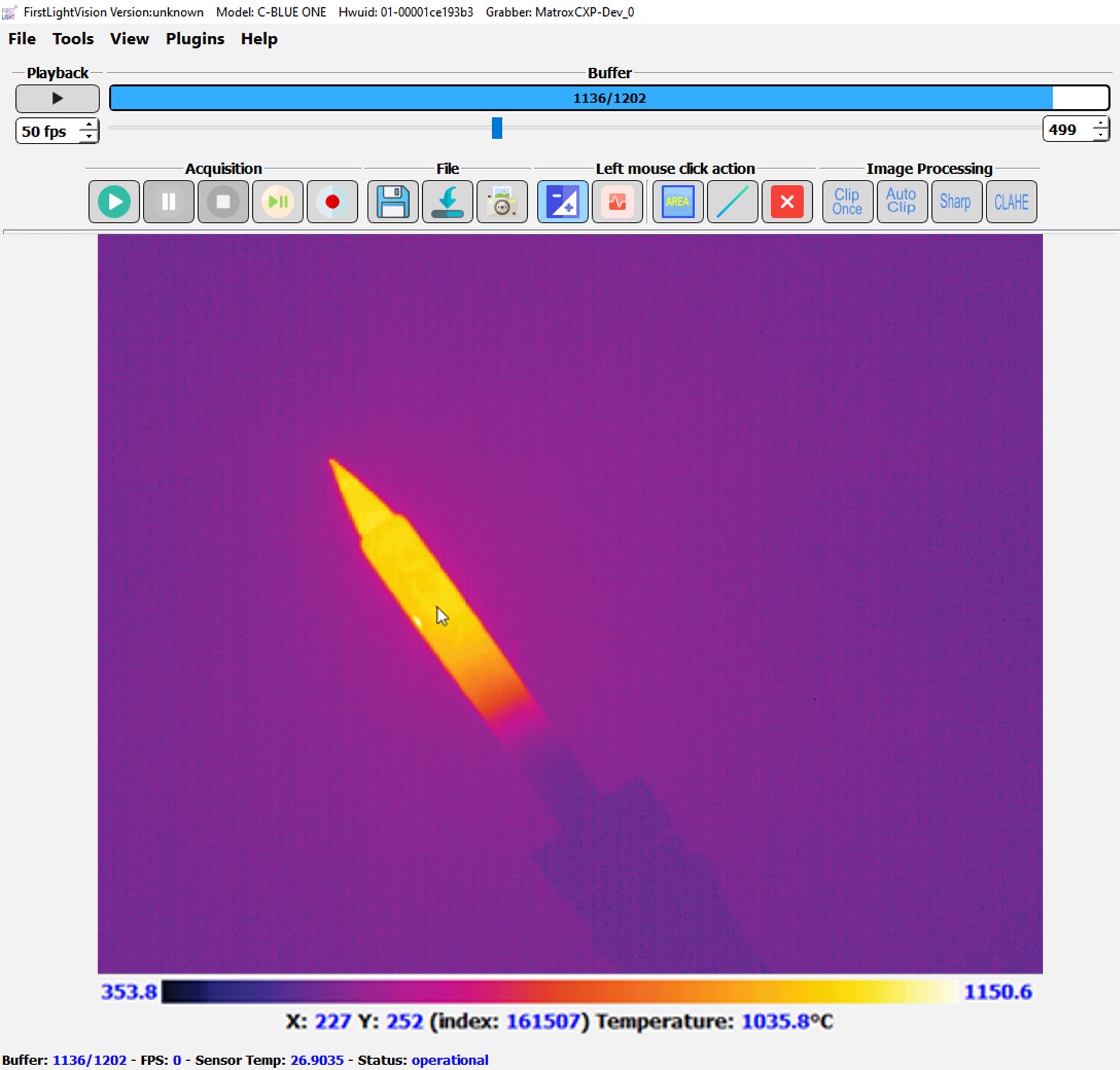
Screenshot of First Light Vision software in thermography mode
In other industries, thermography can be used to control equipment : hot spots, leaks, cracks, etc. Using a camera combined to First Light Vision’s thermography module, a movie was shot to study the heating process of an old electrical resistance. The temperature map points out the spatial temperature inhomogeneities and local defects of the surface.

Time-lapse of a resistance heating up.
C-RED 2 Lite is a high performance camera designed for short wave infrared applications. The camera can reach 600 FPS in full frame. Thanks to this, C-RED 2 Lite is very flexible and can be used for a large scope of applications!
The infrared radiation of a body can be used to measure its temperature. A thermography system comprises an objective lens, a camera, and specific computing capability to convert the signal to temperature. First Light Vision’s thermography module enables calibration of specific experimental designs.
First Light Imaging’s thermography solution comprises a camera * and the First Light Vision software **
Non-contact temperature measurements have endless applications such as detection of temperature irregularities, non-destructive process monitoring in the glass industry, maintenance of machines in the metal industry (overheating, hot spot detection, etc.), etc. C-RED 2 Lite further enables to target new applications thanks to its unique 600 FPS full frame! Its very fast response is a key asset for:
* The thermography plugin can be used with C-RED 3, C-RED 2 Lite and C-RED 2 cameras.
** First Light Imaging only provides bricks of the full thermography device. As such, First Light Imaging does not guarantee the quantitative performance of the temperature measurement. Additional material is required : an object of known temperature and emissivity to perform the single-point calibration and an objective lens for imaging.
Date: June 2023
Author: Cecile Brun
Category: Application Note
